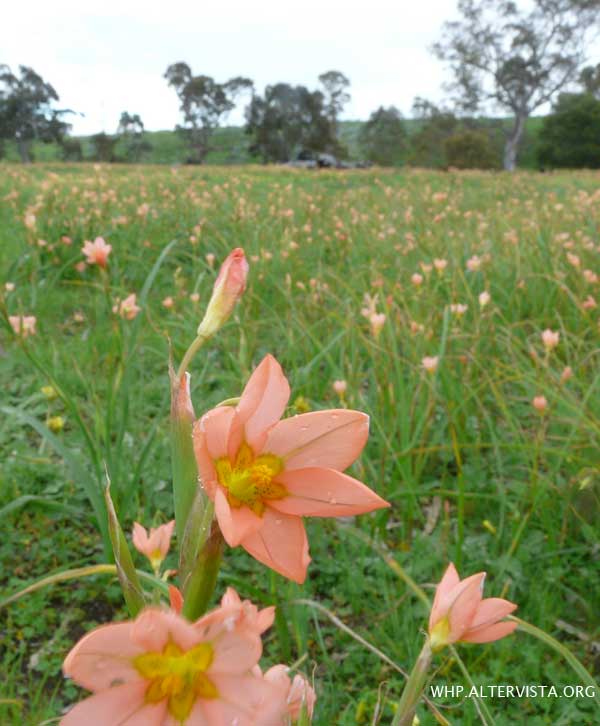
Both of these species have been recorded in the park but all the plants I have seen were the two-leaf form. This reproduces by cormils (like little bulbs) produced both underground and above ground. According to former Ranger in Charge Mike Cusack, there was for a long time a small patch of this in the northwest corner of the park, but a flood (in the 1990s?) spread it down the creek, and it is now extremely common on the flats beside the Creek in the south of the park. It has spread a considerable distance uphill in the former Back Paddock area. In the rest of the park, including the back paddock, it mainly occurs beside tracks and in other slashed areas like the picnic ground. It is very difficult to control by spot spraying because isolated plants are hard to see amongst grass until they flower, at which time it is too late to prevent the formation of cormils. The cormils can remain dormant for up to 8 years. Cockatoos often dig up and eat the corms when the soil is wet, but there will always be plenty of cormils left in the soil to grow into new plants.
Biological Control
A corm feeding weevil has been found on Cape Tulips in their native South Africa but little is known about it (Cullen et al 2012 page 402). Some research has been done into a rust fungus Puccinia moraeae and there are indications it could be effective (Morin & Aveyard 2010). Research has stopped because of lack of funding, which is a national disgrace.